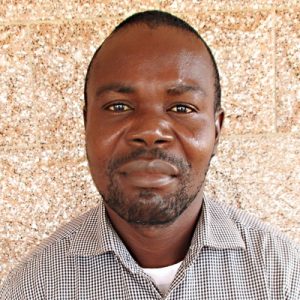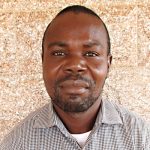The central well at #47 Kamara Street in Suctarr Community is not providing sufficient water for the 226 people who rely on it to meet their daily water needs. The water table has dramatically reduced due to climate change. As a result, it takes longer for people to fetch water. And the overuse of the well is causing frequent damage that requires regular repairs.
"We are really struggling to get a clean source of water when this well is broken down," said Adama Conteh, the 47-year-old caretaker of the pump.
"I had to purchase 2 large drums to store water since this breaks down frequently. Due to the hardship caused by the coronavirus pandemic, purchasing a storage container was no easy sacrifice."
This well is the primary water source and the best source for clean and safe water for the entire community. But the challenge facing all people who use this water source is the well's low recharge. The low recharge makes it nearly impossible for people to get their required amount of water for their various homes and needs.
The other water source is an open well that is treated by the owner. The open well owner was kind enough to share that he and his family take excellent care of the well, and it is chlorinated twice a month. Despite his attention, the well is open means that it is likely still contaminated by the bucket that is dropped down to draw water and other things that may fall into the well. The open well is not safe for children and young adults. The children, when unsupervised, stand a significant risk of falling in the well.
We met Joseph, a 13-year-old boy, who shared that he does not like fetching water from the open well, so he dealt with his sister to share the responsibility.
"Having to look down the open well makes me dizzy anytime I fetch water. I have shared this with my parents, but they always think I am trying to get out of doing my part of the chores," he said.
"I made a deal with my older sister - a deal she could not let pass - she fetches the water, and I carry it home."
Here’s what we’re going to do about it:
Well Rehabilitation
The well marked for this overhaul is dry for a few months every year and needs major work to supply adequate, clean water to the community year-round. The pump will be removed, and a hand auger will be lowered inside and powered by a drill team. This hand auger will allow the team to drill several meters deeper to hit a sufficient water column to ensure the well supplies water throughout all seasons.
As the team drills, a casing will be installed, transforming the bottom of this hand-dug well into a borehole. PVC piping will connect this lower system directly to the pump, a construction that we know will also improve the quality of water.
Once this plan is implemented, everyone within the community will have access to safe drinking water in quality and quantity, even through the dry months.
Hygiene and Sanitation Training
There will be hygiene and sanitation training sessions offered for 3 days in a row.
After our visit, the hygiene and sanitation trainer decided it would be best to teach community members how to build a tippy tap (a handwashing station built with a jerrycan, string, and sticks). They will use these tippy taps for handwashing demonstrations and will also teach about other tools like dish racks and the importance of properly penning in animals.
This training will also strengthen the water user committee that manages and maintains this well. They enforce proper behavior and report to our team whenever they need our help solving a serious problem, like a pump breakdown.

 Borehole Well and Hand Pump
Borehole Well and Hand Pump



































